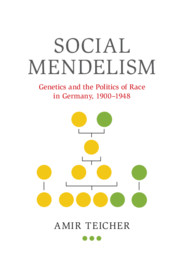A Quiet Landmark in Biology: How Pus from Discarded Bandages led to DNA
This accompanies Kersten Hall and Neeraja Sankaran’s BJHS article DNA translated: Friedrich Miescher’s discovery of nuclein in its original context
Had 19th century Swiss physiologist Friedrich Miescher been able to walk into ‘The Eagle’ pub in the centre of Cambridge today, he would have been utterly horrified. For not only does the pub serve a pint of specially brewed beer called ‘DNA’ (or at least it did when I went in there to unwind after a hard day in the archives a couple of years ago) but in one corner, is a commemorative plaque which bears the inscription:
Discovery of DNA: On this spot on 28th February 1953 Francis Crick and James Watson made the first public announcement of the discovery of DNA with the words, “We have discovered the secret of life”.
The tourists who cluster around this plaque eagerly snapping photos on their phones would probably be disappointed however to learn that the plaque commemorates something that never actually happened. And although the beer may taste pleasant, its name is something of a misnomer.
This isn’t just because Francis Crick had no recollection of actually having burst into the pub and declaring to anyone in earshot that he and Watson had ‘found the secret of life’ as some accounts later claimed had happened. Rather it’s because although Watson and Crick discovered its now famous double-helical structure, the honour for the discovery of DNA itself goes to Friedrich Miescher.
Almost a century before Watson and Crick, Miescher had been working in the freezing cold former kitchen of Tübingen Castle that had now been converted into laboratories for the University, where he was carrying out investigations into the chemical composition of white blood cells. His source of material for this work, while providing white blood cells in ample supply, was far from savoury. Taking regular deliveries of discarded surgical bandages from a local hospital, Miescher scraped off the pus that oozed from them to harvest a rich supply of cells.
What Miescher found in the cells isolated from that pus would go on to transform our understanding of life. For when Miescher analysed their composition he detected the presence of a substance with chemical properties that distinguished it from other biochemical material such as proteins. As this previously unknown material was localised to the nucleus of the cell, Miescher gave it the name ‘Nuclein’ but today we know it by the more familiar name of deoxyribonucleic acid, or DNA.
Along with Watson & Crick’s Nature paper of April 1953, Gregor Mendel’s work on pea hybrids and Charles Darwin’s ‘On the Origin of Species’, Miescher’s work, finally published in 1871, is a landmark in biology. But until now it has never been fully translated from the German in which it was originally written into English. Now, thanks to Cambridge University Press, Dr. Neeraja Sankaran and I are delighted to present, via the British Journal for the History of Science, what we believe to be the first complete translation of this milestone.
Read Kersten Hall and Neeraja Sankaran’s BJHS article here
Related Title







